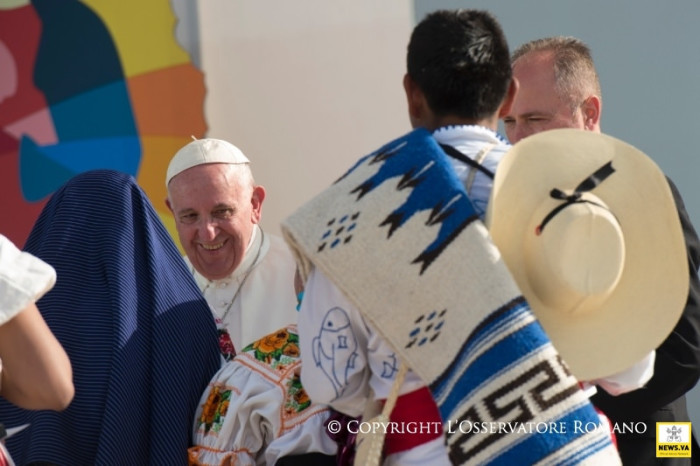19th February 2016
Papal globetrotting


The Pope’s latest trip, to Mexico, and comment to journalists on his return that he’d like to go to China, has set me thinking about the way travel has changed Papal interaction with the world over the last fifty years.
It is difficult to believe that before Pope Paul VI, Papal travel outside Italy was a rarity. Even then, his trips abroad were major events, such as his visit to Jerusalem in 1964 where he met the Ecumenical Patriarch Athenagoras I, the first such encounter since the Great Schism of 1054. It was Pope John Paul II who fundamentally changed the paradigm, making travel an intrinsic part of the job description of a modern Pope as he criss-crossed the world tirelessly, the first Pope ever to visit most of the countries on his global itinerary.
I suspect his successors see this as a mixed blessing. On the one hand, Papal international trips provide many of the great set pieces of any Papacy: think of Benedict XVI in Westminster Hall in London, or praying in the Blue Mosque in Istanbul; the great World Youth Day gatherings from Sydney Harbour to Copacabana Beach; or Pope Francis celebrating Mass before six million people in the Philippines. There is no better way for the Pope to reach out to Catholics and others alike around the world. On the other hand, a modern Pope is now almost ‘condemned’ to travel, at an age when most of us would prefer to remain closer to home. Remarkably, Pope Francis, before his election as Pope at the age of 76, had travelled very little outside his native Argentina. Despite his readiness to travel – since January last year he has been to Mexico, Cuba (twice), the United States, Kenya, Uganda and Central African Republic, Bosnia & Herzegovina, Bolivia, Paraguay and Ecuador, Sri Lanka and the Philippines, as well as several trips within Italy – even he admitted after the Africa trip that he was tired.
The other danger is that so much travel, even though reaching out to the ‘peripheries’ is a priority for Pope Francis, takes the Pope and his senior collaborators away from ‘the day job’. It’s probably not the most efficient way to ensure the management of the Church and the global Holy See network (although the travel does give him an opportunity, albeit under exceptional circumstances, to gauge the health of the Church in the countries he visits). The focus of journalists is on the spectacular trip, rather than more mundane but sometimes more significant and essential domestic reform. A Pope risks becoming defined by his travel.
This is a dilemma for secular political leaders, too, in the age of jet travel and international summitry. Every Pope has to find his own balance between enthusing the faithful ‘out there’ – for which visits are vital tools – and the hard (and often immediately unrewarding) graft of managing the barque of St. Peter at home. But it is perhaps not surprising that Pope Francis always prays before the icon of theSalus Populi Romani at the Basilica of St Mary Major before and after his international trips, both to protect him on the outward journey, and to give thanks for returning home.
Good to remember Jesus was a traveller and he had no home……Pope has a city….lol!